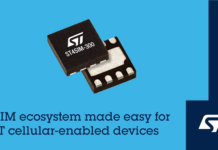
Even though cable operators and satellite TV providers differ fundamentally from mobile operators in providing Internet of Things (IoT) services due to lack of own spectrum or licensed wireless networks, they do have other ‘cards up their sleeves’ which allow them to participate in the eventual massive opportunity for providing Internet of things services, says leading data and analytics company GlobalData.
Companies such as Cox Communications, Comcast and even satellite TV provider Dish Networks are already actively providing IoT services to businesses or have plans in place in the US. The cablecos already compete with large CSPs such as AT&T and Verizon for wireline services such as broadband and Ethernet transport, but lack their own wireless networks.
Kathryn Weldon, Technology Analyst at GlobalData, says: “While cable companies provide consumer wireless services through ‘mobile virtual network operator’ relationships with mobile operators, they needed a different strategy for offering mobile IoT services to businesses. For example, Long range (LoRa) technology can be inexpensively set up (e.g., Comcast) through deployment of gateways from Wi-Fi Access Points.
“With IoT services, however, they have a new set of solutions to upsell to their installed base of small and medium businesses (SMBs), and may even further upset the incumbent mobile operators by drawing new business customers looking for cost-effective IoT solutions. “
Cox is remaining network-agnostic, bundling solutions that include whatever connectivity makes sense for the use case, including buying/aggregating cellular connections from various operators, and bundling it with sensor hardware, and device management.
Dish is being a bit more aggressive, with plans to build out its own NB-IoT network after gaining spectrum assets in public auctions. However while the IoT ‘add-on’ is a natural fit for the cable companies as they have growing SMB customer bases and existing assets like Wi-Fi APs for IoT, Dish doesn’t sell to the enterprise, does not have nearly as many existing assets to build from, and is planning a greenfield build in a market with a very unclear business model.
Weldon concludes: “It is still early days for these alternative IoT providers, but it looks like they will ultimately be able to partake in what we eventually expect will be a ‘massive’ opportunity for connecting devices, products and services to help businesses improve products and processes and generate incremental revenues. In the short-term, however, US IoT revenues for the mobile operators are not massive at all, with even the top operators only generating about $1bn apiece. Perhaps the cable companies and satellite providers can find a new angle with which to push the revenue boundary.”


















